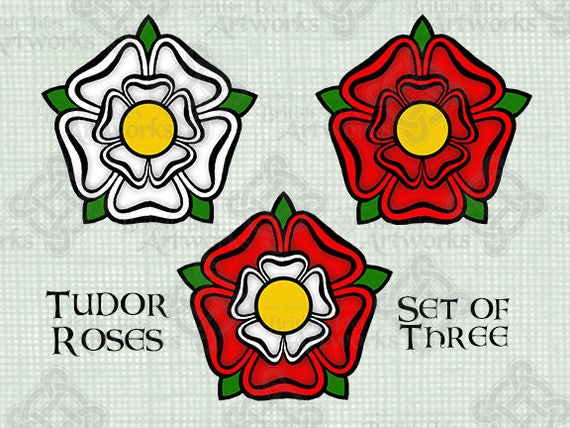
He regularly used the Lancastrian rose by itself, being the house to which he descended. Henry VII was reserved in his usage of the Tudor rose. Tudor rose slipped and crowned from the Pelican Portrait of Elizabeth I. More often, the Tudor rose is depicted as a double rose, white on red and is always described, heraldically, as " proper" (that is, naturally-coloured, despite not actually existing in nature). The Tudor rose is occasionally seen divided in quarters (heraldically as "quartered") and vertically (in heraldic terms per pale) red and white. On his marriage, Henry VII adopted the Tudor rose badge conjoining the White Rose of York and the Red Rose of Lancaster. The roses were actually created after the war by Henry VII. For the best part of a quarter-century, from 1461 to 1485, there was only one royal rose, and it was white: the badge of Edward IV. Contemparies certainly did not refer to the traumatic civil conflict of the 15th century as the "Wars of the Roses". Lancastrian kings used the rose sporadically, but when they did it was often gold rather than red Henry VI, the king who presided over the country's descent into civil war, preferred his badge of the antelope. The "Lancastrian" red rose was an emblem that barely existed before Henry VII. The white rose versus red rose juxtaposition was mostly Henry's invention, created to exploit his appeal as a 'peacemaker king'. (In battle, Richard III fought under the banner of the boar, and Harry under the banner of the dragon of his native Wales).

Henry's father was Edmund Tudor, and his mother was Margaret Beaufort from the House of Lancaster in January 1486 he married Elizabeth of York to bring the two factions together.

Kings of the House of Lancaster had sometimes used a red or gold rose as a badge and the House of York had used a white rose as a badge. He thus brought to an end the retrospectively dubbed " Wars of the Roses". In the Battle of Bosworth Field (1485), Henry VII, of the House of Lancaster, took the crown of England from Richard III, of the House of York.


 0 kommentar(er)
0 kommentar(er)
